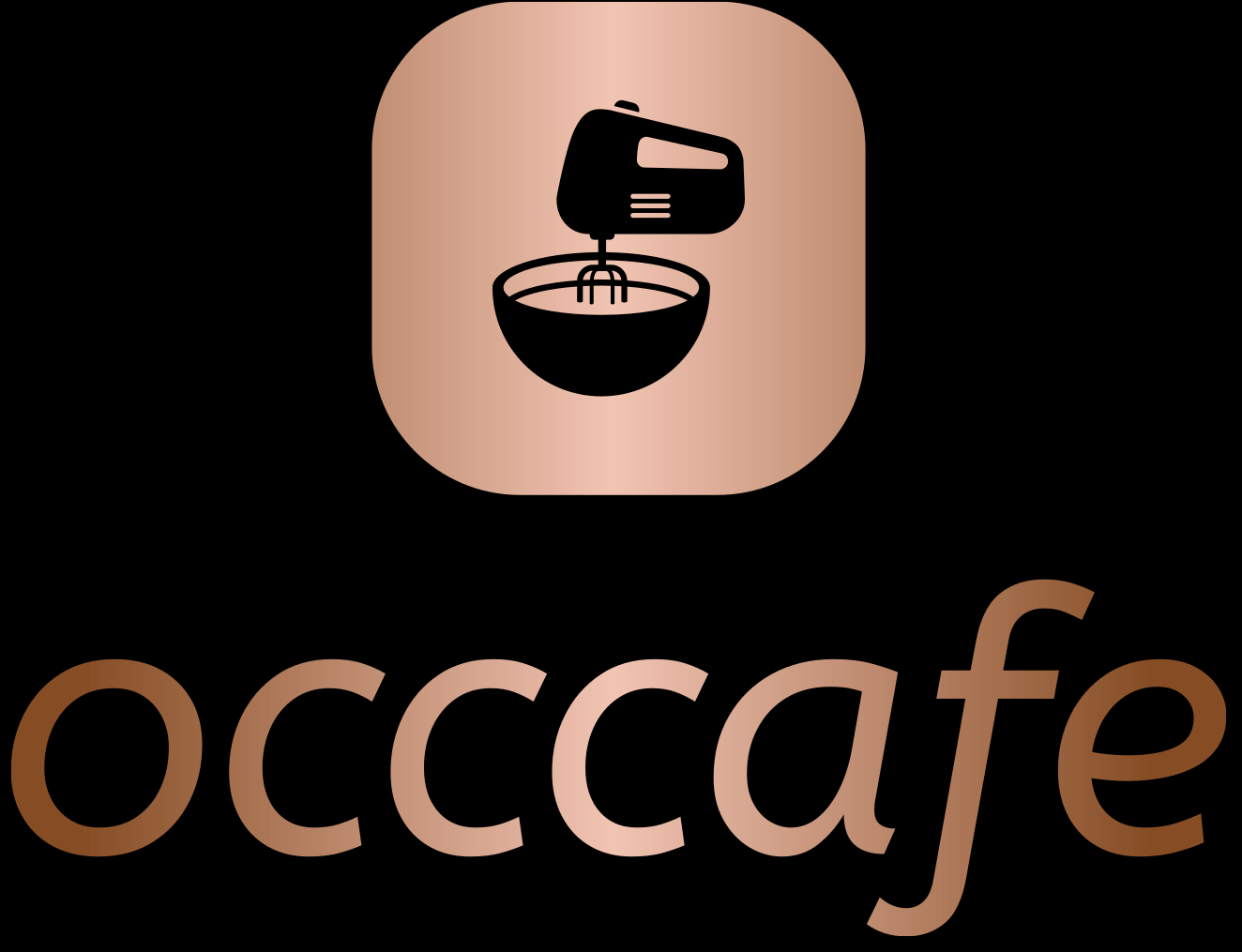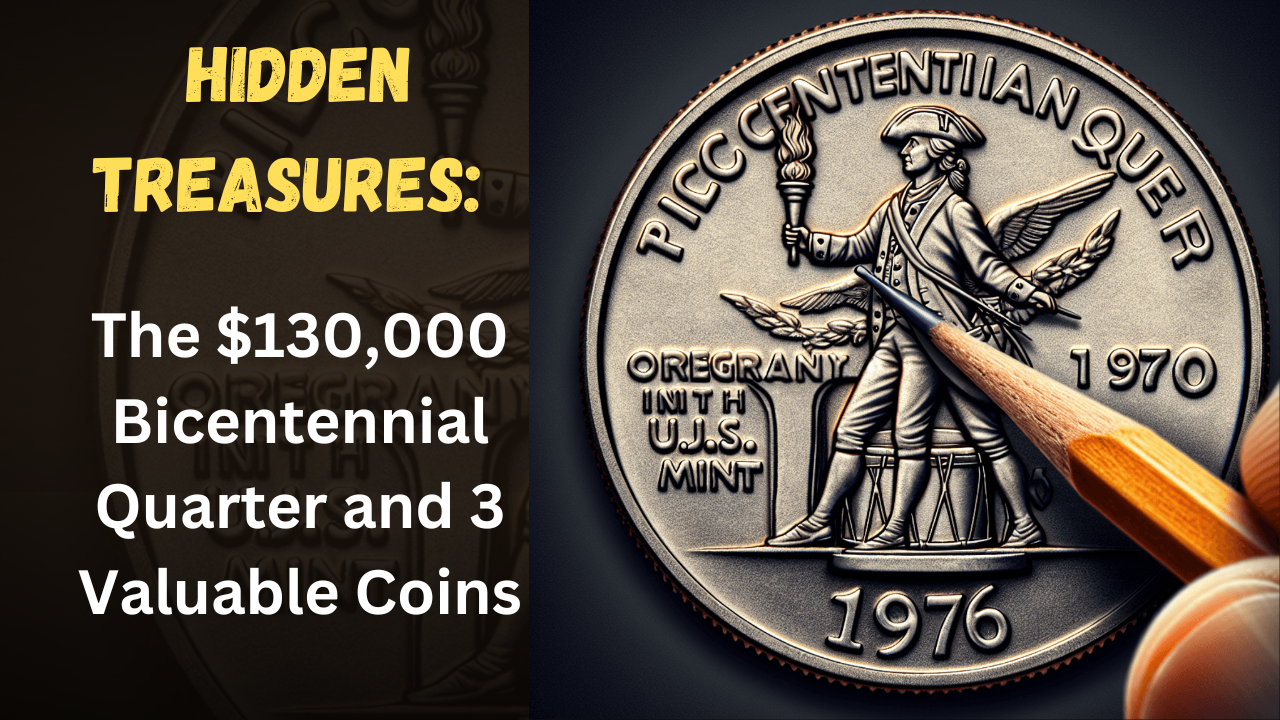Introduction
The 1976 Bicentennial Quarter is a prime example of how your pocket change may be worth small fortunes. Some rare versions of the coin, minted specifically to celebrate America’s 200th birthday, can sell today for up to $130,000.
Valuable pieces of American history might be hidden in your daily purchases. Every handful of pennies and nickels contains one or more coins worth much, much more than their face values. The Bicentennial Quarter is not the only coin circulating in your pocket change that can yield impressive sums. Here’s a sampling of other money-makers:
- Rare pennies could be worth up to $200,000
- Error-stamped quarters worth as much as $30,000
- Double-die coins selling for $100,000
It’s much more than just a hobby. Coin collecting could mean preserving history, prudent investing, and treasure hunts as well. This would add to your understanding of how valuable coins are; they not only build financial sense in you but also make you connected to some historic American events.
Next time, when you receive your change back for that purchase you made, have a good look at it. The normal quarter or the simple-looking penny might actually turn out to be some variant that could be worth thousands of dollars.
The 1976 Bicentennial Quarter: A Collector’s Dream
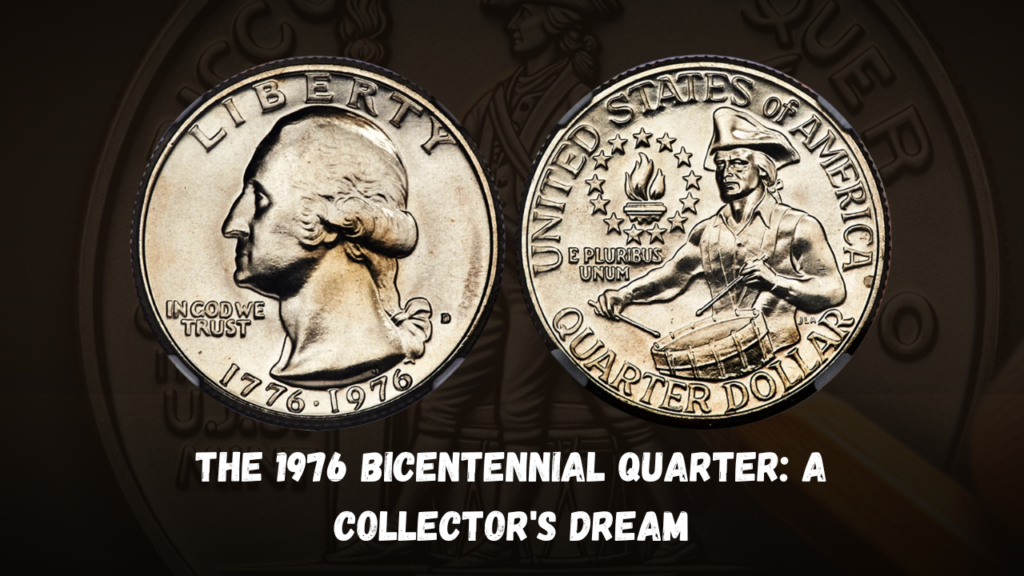
The 1976 Bicentennial Quarter is a great piece of American coinage history. The U.S. Mint made it to mark the country’s 200th birthday. This special quarter has a unique design on the back, designed by artist Jack L. Ahr, which depicts a Colonial drummer with a victory torch surrounded by 13 stars.
Design Elements
Design elements of the 1976 Bicentennial Quarter include the following:
- Dual dating of “1776-1976” on the front
- Colonial drummer reverse side substitute the eagle
- Signification of quarter dollar is crystal clear
- “E PLURIBUS UNUM”
Minting Process and Production
The quarters were minted from 1975 to 1976. Both copper-nickel clad and 40% silver were minted at the same time. Each one of the Philadelphia, Denver, and San Francisco mints made over 1.7 billion Bicentennial quarters so people everywhere could get their share of the quarters.
Valuable Errors to Look For
Although most Bicentennial quarters are relatively common, some have an extraordinary value because of certain minting errors:
- Double Die Obverse (DDO) – clear letter doubling
- Double Die Reverse (DDR) – clear doubling in the drummer design
- No mint marks
- Off-center strikes
A MS-65 graded DDO Bicentennial quarter in its original mint luster and with sharp strike details can bring as much as $130,000 at auction. The prices are even higher when considering MS-65 or higher, original mint luster, sharp strike details, and error combinations.
Silver Variants and Circulation Values
The composition variants of the silver quarter sell from $5-$50 based on condition. Circulating issues hold their face value except in the case of these listed errors.
Other Hidden Treasures in Your Change
The world of rare US coins goes far, far beyond the Bicentennial Quarter. Change in your pocket may hold precious treasures worth thousands – and even hundreds of thousands-of dollars. Let’s start this treasure hunt into these hidden gems with one of the most remarkable discoveries: the 1969-S Lincoln Penny.
1. The 1969-S Lincoln Penny: A Rare Gem
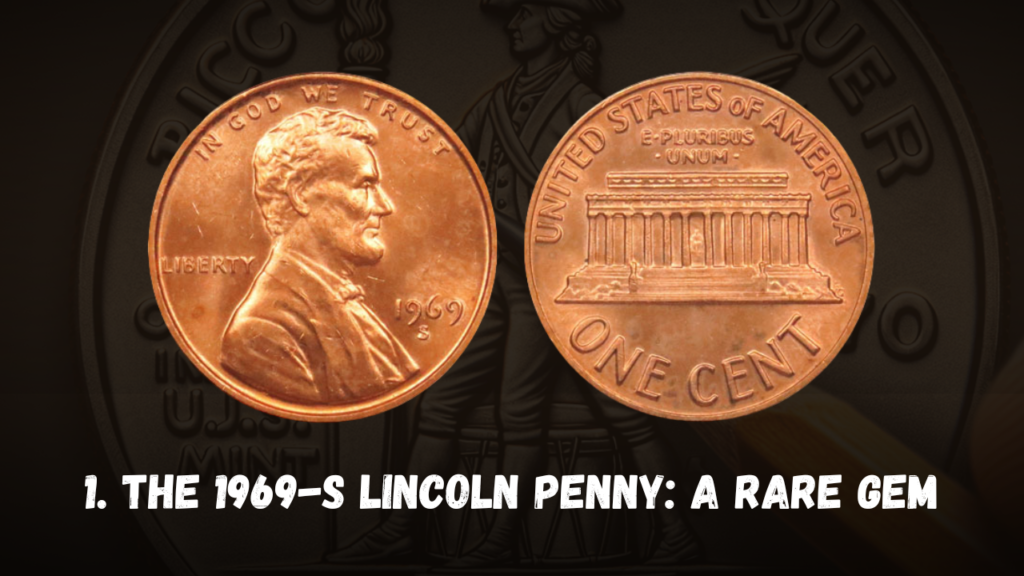
This is such beautiful artistry on how coins are minted that the 1969-S Lincoln Penny epitomized. Minted in the San Francisco Mint, the profile of Abraham Lincoln can be observed on the obverse face while the Lincoln Memorial adorns the reverse. A hallmark double-die error can appear on some pieces, although it is only part of what makes the specimens a bit unique in that manner since it happened when minting.
The Double-Die Error Explained:
- The die hit the blank coin twice but off-angle.
- This resulted in an obvious doubling of the date and lettering
- The words “LIBERTY” and “IN GOD WE TRUST” exhibit obvious doubling
- Only a few of these error coins are known to exist
Value and Rarity:
- Authenticated specimens have brought as much as $100,000
- Fewer than 20-30 genuine examples are thought to exist
- The error occurred before mass distribution so these pennies are very rare
How to Identify a Genuine 1969-S Double Die:
- Search for the “S” mint mark below the date
- Look for doubling on lettering, specifically in “LIBERTY”
- Date: doubling of numbers should be distinct and separate
- Use a hand lens to observe the doubling on the features
- Doubling must be the same all the way around the areas it occurs
Authentication Tips:
- Weight: 3.11 grams
- Color/patina: copper proper
- Compare with known good examples
- Consult professional grading if you feel your coins are worth more
Only with careful observation and attention to detail can you find this rare penny, as most collectors spend years scouring penny rolls and loose change for this numismatic treasure.
2. The 1943 Copper Penny: A World War II Anomaly
1943 was a year that heralded a great change for US penny production. It was during World War II that the use of copper in military equipment became widespread, and the U.S. Mint produced zinc-coated steel pennies to reserve the amount of copper available for shell casings and ammunition.
An interesting error occurred during this run. There were a few copper blanks that had remained in the minting tubes of the mint. As these copper blanks got mixed up with the new stock of steel, the result was a string of copper-coined pennies. To this day, 40 actual copper pennies exist that were originally coined in 1943.
Major identification points:
- Copper rich appearance and not electroplated
- Weight=3.11 grams
- No magnetism reaction
- date “1943” sharply visible
It’s also because they’re so scarce that their values are incredibly high: recently, $200,000 was sold for a lot of pennies. Not all coins are legitimate: copper-coated steel versions of the 1943 copper penny can be easily created, as well as ‘re-stamped’ versions of pennies dated 1948, to say nothing of genuine counterfeits.
This 1943 copper penny is one such testimony to wartime changes in production and interesting accidents that sometimes create numismatic treasures.
3. The 2004 Wisconsin State Quarter (Extra Leaf): A Collector’s Delight
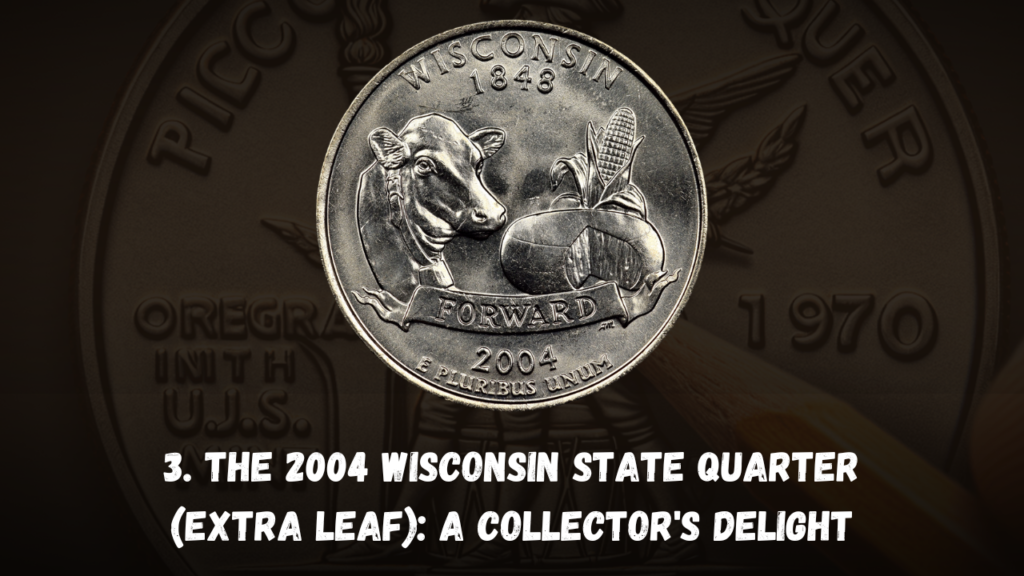
This state quarter designed to celebrate Wisconsin’s farm heritage is really intricately designed. The reverse has a cow, a piece of cheese and a stalk of corn- all indicative of Wisconsin’s dairy farm and farm culture. What has made this particular quarter rare is an intriguing mint error that has shown up in some examples- an additional leaf on the corn.
There are two different forms of the error.
- High Extra Leaf: extra leaf is pointing upwards
- Low Extra Leaf: the additional leaf is pointing down up
These error quarters value between $300 and 30,000, determined by their condition and varieties. The high leaf mostly fetches more money on account of its scarcity whereby some even reach as much as $6k in markets.
How to Identify the Error:
- Quarters printed in 2004 by Wisconsin’s design
- Observe the left ear of corn
- Check for an additional leaf below the main leaf on the left
- Use a magnifying glass to verify authenticity – actual imperfections have uniform metal flow
The error occurred at the Denver Mint, so authentic specimens will bear the “D” mint mark. Professional grading services have authenticated many thousands of examples, making this error rare but attainable for serious collectors sorting through circulation. For those who want to know more about the price of error coins, it’s worth noting that these unique pieces can bring real money as illustrated in this article about big money from small coins.
Read more :- Russell Wilson puts arm around Justin Fields shoulder after fresh Pittsburgh blow
Selling Your Rare Finds: Maximizing Value in the Market
You may sell rare coins only when the price is received optimally. Here are several things you can choose.
1. Professional Auctions
- Auction Houses for established sales
- Professional services regarding the grading and authenticity
- Highest price because of an open, competitive bid
- Commisson fees vary, with the average 15%-25%
2. Private Sales
- Direct from a collector
- Cheaper as opposed to auctions
- Seller’s knowledge of market is also required along with good negotiating skills
- Top Choices:
- eBay, r/Coins4Sale – the subreddit on Reddit, and NumisMedia
3. Key Value Factors
- Coin Grade/ Condition
- PCGS/ NGC certificate
- Historical
- Timed demand in market and Rarities.
Professional coin dealers give instant cash; however, they pay prices at 50-70% retail value. Local coin shops give face-to-face sales, where the seller gets his cash right away, although perhaps a little lower in price from such markets.
Do your research beforehand by using price guides, like Coin World or Numismatic News. Then, take good pictures showing the special features of the coin to serious bidders.
Conclusion
Your pocket change may hold hidden treasure worth thousands — or hundreds of thousands — of dollars. There’s nothing that brings a little excitement into the routine of everyday dealings than finding a $130,000 Bicentennial Quarter or a 1943 Copper Penny — the rarest coin made.
Look at your coins today and look for:
- Double-die errors
- Mint mark variations
- Design irregularities
- Unique historical features
Coin collecting, as a hobby, offers the possibility of financial benefits and personal satisfaction. For every coin, there exists a history to be understood about American history, the World War II copper shortage of pennies, the bicentennial celebration for our country, and others. Searching for these prized pieces makes mundane transactions akin to treasure hunts.
Remember that that loose change in your pocket or the coin jar could be worth far more than its face value. Take time to inspect coins carefully. You could just discover a numismatic gem that transforms your spare change into a sizeable investment.
FAQs
What is the significance of the Bicentennial Quarter?
The Bicentennial Quarter was minted in 1976 and honours the 200th birthday of the United States. Due to its background in history and market potential, one particular error may be worth as much as $130,000, thus it forms one of the collector’s dreams. Its reverse side has a representation of Independence Hall.
How can I identify valuable coins hidden in my change?
Understand how to identify valuable coins with key features of rare coins, such as the 1969-S Lincoln Penny’s double-die obverse error or the unique history of the 1943 Copper Penny. Look for specific design elements and errors that make them valuable. Use online resources or guides to assist you in searching for valuable coins.
What are some other valuable coins I might find in circulation?
Other valuable coins include the Bicentennial Quarter, which may be found in combination with other valuable coins, such as the 1969-S Lincoln Penny with a double-die error, worth up to $100,000; the 1943 Copper Penny, which is very rare and valued at around $200,000; and the 2004 Wisconsin State Quarter with an extra leaf error, worth up to $30,000.
What is the best way to sell my rare coins?
One way of selling rare coins is either by auctioning or through private sales. You may also have to research on the market value and trend that determine your selling prices. Appraising your coins professionally is always advisable in case you seek to maximize their value during sale.
